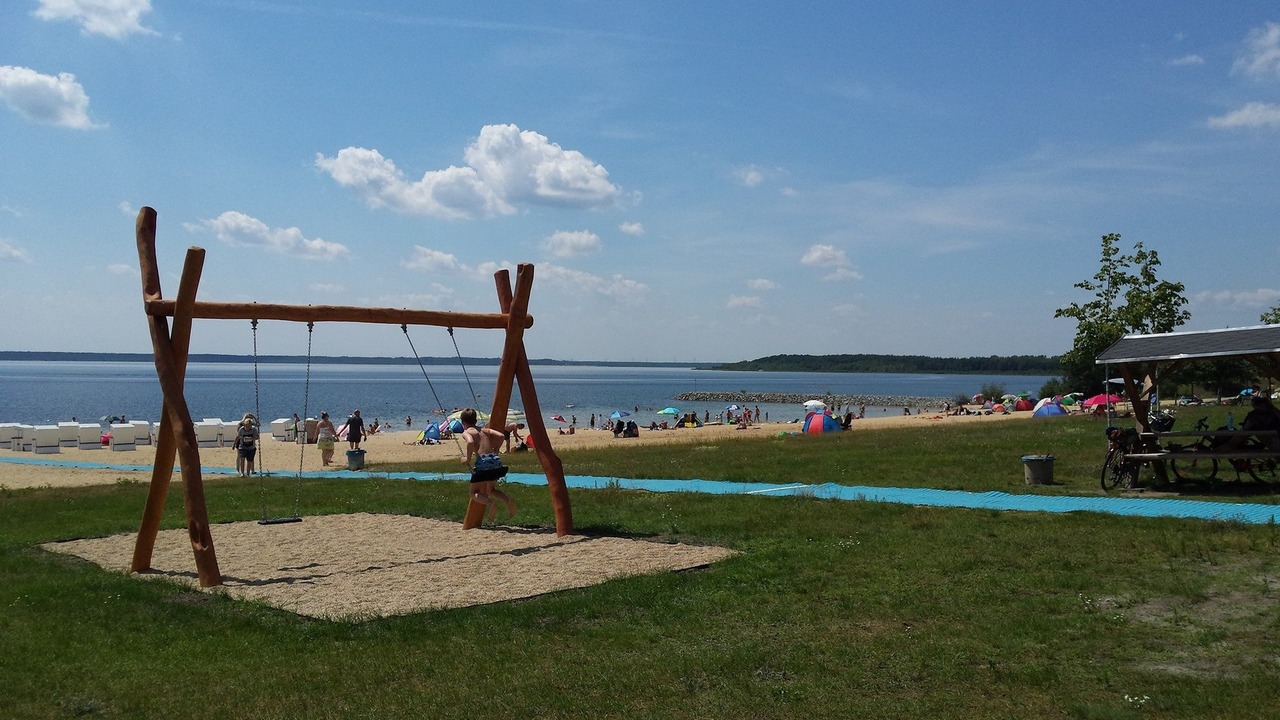Bärwalder See is the largest water body in the Saxon part of the Lusatian Lake District. What is more: it is the largest lake in the Free State of Saxony. The flooded pit of the former Bärwalde opencast mine measures just over 5 square miles (13 km2). This space could accommodate over 1,850 football fields. Some 185 million metric tons of coal were extracted from this pit between 1976 and 1992 and for the most part converted into electricity in the Boxberg power plant. Redevelopment of the prematurely discontinued opencast mine began in 1993 and the flooding of the pit commenced four years later. Bärwalder See can store up to 6,145 million cubic feet (174 million m3) of water.
The water body has a pH value above 6, which is rather unusual for flooded opencast mine pits, since iron and sulphur leaking from the dumps usually create a partly acidic environment. Yet in the environs of the Boxberg district of Uhyst/Spree, the lake is largely filled by natural Spree river water. This is one of the factors behind the excellent water quality, which in turn is greatly appreciated by bathers. The lake features three beaches: in Boxberg/O.L., in Uhyst/Spree and in Klitten. Piers in Klitten, Uhyst/Spree and Boxberg/O.L. provide optimal conditions for passenger cruises. More information and possible uses regarding the water body are available at www.baerwalder-see.eu.
The name Uhyst derives from the Sorbian language (Delni Wujězd) and denotes a gateway from the Bautzener Gefilde (Upper Lusatian Gefilde) to the forest or heathland. The village was first mentioned in 1342. The salt road in its immediate vicinity was its lifeline. The Uhyst knight’s manor was created in the 15th century and had a determining influence on the village’s development. The church was built between 1711 and 1716 and stands to this day. It was followed by the construction of the Schloss (stately home) with its Baroque park from 1738 to 1742. The Moravian Church (Unitas Fratrum; German: Herrnhuter Brüdergemeine) ran a boarding school here in the 18th century. One of its pupils was Prince Hermann von Pückler-Muskau.

